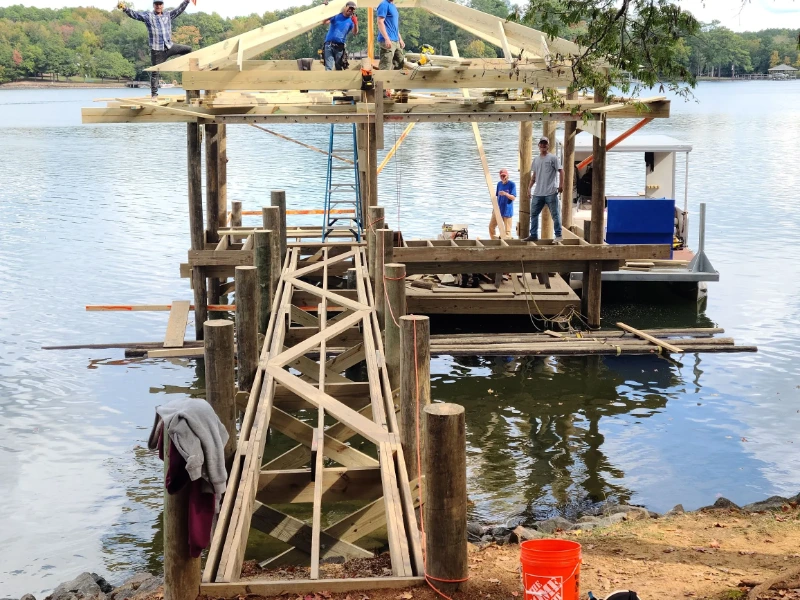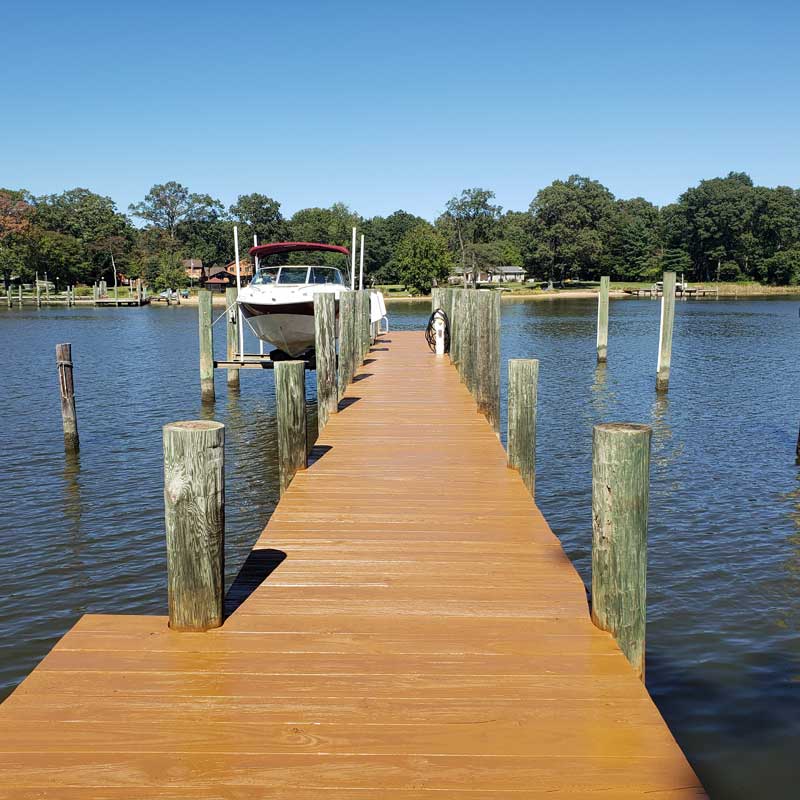Why Normal Upkeep Can Lower Future Dock Repairs
Why Normal Upkeep Can Lower Future Dock Repairs
Blog Article
Effective Dock Repair Work Techniques: Making Certain Structural Integrity
Ensuring the structural integrity of docks through effective repair work techniques is critical for the durability and security of marine centers. This includes a multi-faceted strategy beginning with comprehensive evaluations using sophisticated innovations like sonar devices and from another location operated vehicles (ROVs) to find both noticeable and hid problems. Ultimately, picking the appropriate fixing materials, such as composite materials and corrosion-resistant alloys, is vital for durability. Structural support approaches, consisting of the application of cross-bracing systems and load-distribution plates, play an important role in mitigating anxiety factors. The significance of these strategies ends up being apparent when checking out advanced fixing methods and preventative maintenance approaches.
Analyzing Dock Damage
Evaluating dock damages is a critical first step in making certain the structural honesty and safety of any docking center. Key aspects to check out include the dock's foundation, pilings, outdoor decking, and hardware (Dock Repairs).
Architectural designers or certified inspectors generally perform these assessments using specialized tools and techniques. Undersea evaluations might employ finder tools or remotely ran vehicles (ROVs) to spot submerged damages. Above water, visual inspections are enhanced by using dampness meters and various other diagnostic tools to reveal underlying problems not right away visible to the naked eye.

Choosing Repair Products
Picking the ideal repair materials is a pivotal action in the dock restoration procedure, one that straight influences the long life and efficiency of the repaired framework. Product choice should be driven by aspects such as ecological conditions, load-bearing requirements, and compatibility with existing dock elements. As an example, wood is a standard option for docks due to its natural resilience and visual allure. However, selecting the right kind of timber, such as pressure-treated lumber or normally rot-resistant types like cedar or teak wood, is crucial to withstand aquatic settings.
In addition to timber, composite products are significantly prominent because of their sturdiness and low maintenance requirements. Composites, normally made from a mix of plastic and timber fibers, supply outstanding resistance to rot, insects, and UV damage. For metal anchors, choosing corrosion-resistant alloys such as galvanized steel or marine-grade light weight aluminum is important to prevent rust and ensure architectural stability in saline water problems.
Epoxy resins and marine-grade sealants are indispensable for fixing fractures and sealing joints, supplying a water resistant barrier and improving the dock's general toughness. By meticulously picking high-grade materials, dock repair work can accomplish lasting results, consequently protecting versus future destruction and guaranteeing safe, trusted use.
Architectural Support Techniques
Reliable architectural support strategies are essential in ensuring the stability and durability of dock repair work. One fundamental technique includes making use of steel or composite support bars (rebar) within concrete structures. Rebar supplies added tensile toughness, preventing cracks and distributing loads a lot more equally. This approach is specifically reliable for anchors revealed to heavy loads or extreme environmental problems.
Another necessary method is the application of fiber-reinforced polymers (FRP) These materials supply high strength-to-weight ratios and superb resistance to corrosion, making them suitable for reinforcing concrete or wooden anchors. FRP can be used in strips or sheets and adhered with epoxy materials to improve structural honesty.
Bracing and securing systems additionally play a critical duty in structural reinforcement. Cross-bracing, using metal or wood light beams, can counteract lateral pressures, minimizing guiding and activity. Securing systems, such as helical piers or driven heaps, give a secure structure by transferring loads to deeper, extra secure dirt layers.
Finally, the assimilation of load-distribution plates can assist distribute weight much more evenly across the dock's surface area, alleviating local stress factors. These techniques collectively make certain that docks remain robust and risk-free, qualified of holding up against the roughness of their functional setting.
Advanced Repair Work Approaches

Another advanced strategy includes undersea welding, which allows for repairs to be performed without the demand to dewater the area. This approach is particularly beneficial for attending to structural issues in immersed dock components, guaranteeing minimal disruption click now to operations. Improved welding strategies, paired with robotic systems, provide accuracy and dependability, consequently extending the life-span of the dock.
Additionally, cathodic security systems are executed to avoid rust in metallic dock structures. By making use of sacrificial anodes or pleased existing systems, these techniques successfully reduce the electrochemical procedures that lead to product wear and tear.
Lastly, progressed tracking modern technologies, such as architectural health surveillance (SHM) systems, give real-time data on the condition of dock frameworks. These systems make it possible for positive maintenance and prompt treatments, ultimately ensuring the long-term structural honesty of the dock.
Maintenance and Avoidance
Upkeep and avoidance are essential concepts that underpin the longevity and safety and security of dock frameworks. Routine evaluations are extremely important, enabling early detection of damage, possible weaknesses, and ecological influences. An aggressive technique, involving regular look for corrosion, rot, and architectural changes, alleviates costly repair services and prolongs the dock's functional life.
Safety nets should include applying protective coverings to metal parts to defend against corrosion and utilizing treated timber to resist decay. Furthermore, guaranteeing correct water drainage and ventilation can avoid water buildup, which is a common source of structural deterioration. Including top quality products and adhering to manufacturer guidelines throughout building and construction and repair service stages also play crucial duties in improving toughness.

Training link workers in dock maintenance ideal methods guarantees consistent application of safety nets. Leveraging technical advancements, such as drones for examinations and sensors for real-time tracking, can even more improve upkeep initiatives. By prioritizing maintenance and prevention, dock proprietors can make sure architectural honesty, functional security, and economical administration over the dock's lifespan.
Final Thought
In conclusion, maintaining the structural stability of marine facilities requires detailed dock repair work methods. Advanced repair work strategies, combined with routine upkeep practices, make sure the dock remains secure and operational under diverse ecological problems.
Ensuring the architectural integrity of anchors through efficient fixing methods is vital for the longevity and safety and security of marine centers.Picking the ideal repair materials is a crucial step in the dock repair process, one that directly affects the durability and efficiency of the article source repaired framework.Effective architectural reinforcement strategies are critical in ensuring the security and durability of dock fixings. By focusing on upkeep and avoidance, dock owners can make certain architectural stability, functional security, and cost-effective monitoring over the dock's life expectancy.
In conclusion, keeping the architectural honesty of aquatic facilities necessitates thorough dock repair methods.
Report this page